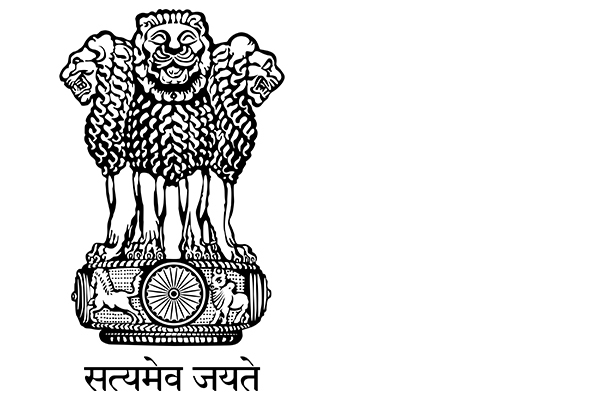DIRECTORATE OF INFORMATION AND PUBLICITY
GOVERNMENT OF DELHI
***
Dated : 08/01/ 2016
- Latest data shows more than 50% drop in air pollution caused by vehicular traffic in Delhi
More than 50% drop in air pollution primarily caused by vehicular traffic has been recorded according to the latest ambient air data collected by mobile teams of Delhi Pollution Control Committee on Saturday at 18 locations, through mobile dust samplers on using the Light Scattering Technique.
(Please find attached the data of 18 locations about Jan 9 recordings)
IMPORTANT FIND
- PM 2.5 air pollution levels on Saturday at these 18 locations showed recordings of less than 100 (ug/m3) at nine locations, which is more than 50% less than average recordings since the odd-even regulations were put in place for four wheeled vehicles since 1st January.
- Further, four locations showed PM 2.5 measurements between 100-200.
- Of these total 18 locations, lowest measurement was at 59 and the highest at 301.
- Out of a total of around 150 locations across the national capital, where mobile DPCC teams have so far collected ambient air data since 1st January, the data of Saturday has shown the most encouraging results so far, further proving the encouraging trend that reduction of vehicular traffic has resulted in lower air pollution in Delhi.
- In 18 locations measured on Saturday, even the PM 10 air pollution levels have shown a marked decline.
- PM 10 levels have been recorded between 135-475.
- In 8 of the 18 locations, PM 10 levels were recorded at less than 200.
- On an average, PM 10 levels are also showing a drop of close to 30%.
- According to the scientists, favourable weather conditions on Saturday, particularly a positive wind speed and sunny conditions, added to the positive air quality.
- Scientists have been consistently predicting that moment weather conditions improve, the results of odd/even formula for four wheeled vehicles will show immediate results.
SCIENTISTS FROM IIT KANPUR PRESENTATION TO DELHI GOVERNMENT
There has been a lot of speculation in sections of the media with regards to the report of IIT Kanpur about air pollution in Delhi, and lots of erroneous interpretations have also been made.
The concerned scientists have made a detailed presentation to the PWD minister Mr Satyendar Jain and Environment Minister Mr Imran Hussain.
The executive summary of the report with regards to the contribution of vehicular traffic towards air pollution of Delhi is as follows :
Delhi faces a severe air pollution problem due to the number of sources which are impacting the ambient air quality. Vehicular pollution in Delhi has grown from 64% to 72% from 1990 to 2000, whereas petrol and diesel consumption have grown by 400% and 300% respectively.
Vehicular pollution
This source is the second largest source and most consistently contributing source to PM10 and PM2.5 in winters. Various control options include the implementation of BS VI, introduction of electric and hybrid vehicles, traffic planning and restriction of movement of vehicles, retro-fitment in diesel exhaust, improvement in public transport etc have been proposed and their effectiveness has been assessed.
VEHICLES :
vehicles emission and their contribution to ambient air concentration is highly significant to PM10 and PM2.5 both in winter and summer. In winter, on average vehicles can contribute 25% to PM2.5 and at certain locations this contribution could be above 35%.
In summer, vehicular contribution is masked by other prominent sources. There is a significant contribution of diesel vehicles (trucks, buses, LCV 275 and cars etc) to PM10, PM2.5 and NOx. Therefore our control measures have generally focused on advanced technological intervention for diesel vehicles.
- Retro-fitment of Diesel Particulate Filter (DPF): These filters have PM emission reduction efficiency of 60-90%. If the diesel vehicle entering in the city has been equipped with DPF, there is a reduction of 40% emission. This reduction in emission will reduce the ambient air concentration by 10 μg/m3.
- Introduction of Electric/Hybrid Vehicles: If electrical and hybrid vehicles are introduced, it is assumed that by January 2017, 2% of 2-Ws, 10% of 3-Ws and 2% 4Ws will be electric/hybrid vehicles. The percentage reduction in emission estimated to be 2.3 %. If we assume additional multiplier of 1.5 to electrical and hybrid vehicles of January 2017, the reduction in PM emission will be about 4.5% and net improvement in air quality by about 1-2 μg/m3.
- It is recommended that the sulphur content in diesel should be brought down to 10 ppm or less by end of 2017. This ultra-low sulphur fuel will reduce PM10 and PM2.5 emissions from vehicles by about 6 percent.
- If the above points (1,2,3) are implemented as scheduled, then there is an effective reduction of 51 percent of total vehicular emissions.
- The effectiveness and usefulness of accelerated implementation of BS VI has been analysed. It is important to introduce BS VI as both PM and NOx emissions are expected to reduce significantly. Introduction of BS VI will reduce PM10 and PM2.5 emission by 2.4 μg/m3 for the introduction year (2019). The reduction in NO2 control will help in reducing secondary nitrates and will also prevent formation of ozone.
- Introduction of 2-Ws with Multi Point Fuel Injection (MPFI) system: This option was not assessed but it can impart significant reduction in emission from 2-Ws. It is recommended to introduce from January 2018.
- Vehicular emission norms/standards are enforced for the new vehicles at the factory. PUC checks are the means to check emissions from on road vehicles. Emissions from in-use vehicles also depend on the maintenance and up keep of vehicles. There is a need to ensure that vehicles are properly maintained as per the recommendation of the manufacturer. In this regard, it is proposed that each vehicle manufacturing company should have its own service centers in sufficient number to cater to the need of their vehicles in the city. The automobiles manufacturing company owned service centers (AMCOSC) should be fully equipped for complete inspection and maintenance of vehicles ensuring vehicles conforming to emission norms and fuel economy after servicing.
- For the long-term sustenance of the air quality, the vehicular population should stabilize to the level of number of vehicle at the end of 2019.
***


 Directorate of Information & Publicity
Directorate of Information & Publicity 


